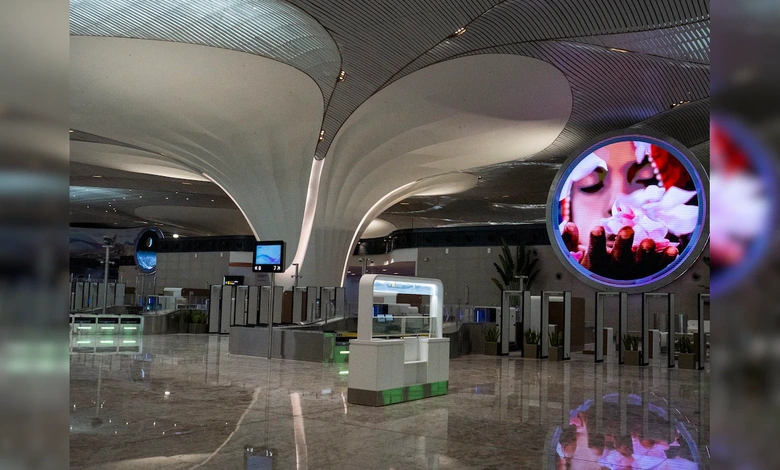
In a landmark achievement for India’s aviation sector, the Navi Mumbai International Airport swung open its doors on Wednesday, heralding a Rs 19,650 crore endeavor spearheaded by Adani Airports Holdings and masterminded by the renowned Zaha Hadid Architects (ZHA). As reported by the Press Information Bureau, this ambitious hub promises to transform air travel in the bustling Mumbai metropolitan area, easing the strain on Chhatrapati Shivaji Maharaj International Airport while heralding a fresh era of innovation and efficiency.
At the heart of the project lies ZHA’s evocative design, selected from a global competition in 2018. Drawing from the lotus—India’s revered national flower—the terminal embodies themes of renewal and grace. A sweeping steel-and-glass canopy seems to hover effortlessly above the landscape, propped up by 12 slender, petal-inspired columns and 17 robust mega-columns. These elements, meticulously engineered to endure seismic tremors and fierce winds, not only infuse the structure with symbolic depth but also serve as vital load-bearing features, allowing daylight to cascade through expansive concourses.
This fusion of cultural resonance and cutting-edge engineering echoes ZHA’s hallmark fluidity, seen in icons like Beijing Daxing International Airport. The result is a gateway that feels profoundly Indian in spirit yet universally forward-thinking, poised to “echo India’s aspirations,” as the firm describes it.
The airport’s rollout unfolds in deliberate stages. Phase one launches with a 3,700-meter runway and a terminal geared for 20 million passengers yearly. It features 88 check-in desks—66 manned and 22 automated—divided across three zones dubbed Alpha, Bravo, and Charlie, alongside four boarding gates. Cargo operations kick off at 0.8 million metric tonnes annually. Looking ahead, expansions will introduce parallel runways and up to four interconnected terminals, catapulting capacity to 60-90 million travelers a year and cementing its status among Asia’s top aviation nodes.
For passengers, the emphasis is on seamless flow and serenity. Sunlit corridors, swift travelators, and unobstructed pathways guide travelers effortlessly through retail outlets, dining zones, and lounges. Intuitive signage and wide-open spaces minimize the chaos of transit, fostering a sense of ease amid the rush.
Nestled on a vast 1,160-hectare expanse in Ulwe, roughly 37 kilometers from central Mumbai, the site doubles as a multimodal nexus. A verdant forecourt bridges air and ground transport, while enhanced highways, rail links, and ties to the coastal corridor streamline journeys—even hastening shuttles to the existing Mumbai facility.
The journey to fruition traces back to an initial alliance between GVK and CIDCO, with ZHA’s triumph in the 2018 bid. Adani Airports Holdings assumed stewardship thereafter, navigating phased builds that tackled land procurement, community relocations, and operational fine-tuning.
More than mere infrastructure, Navi Mumbai International Airport signals a maturation in Indian aviation: a harmonious blend of tech-savvy systems, user-centric layouts, and evocative aesthetics. Its lotus silhouette stands as a beacon of progress, mirroring Mumbai’s relentless dynamism and inviting the world to a hub that’s as inspiring as it is indispensable.
